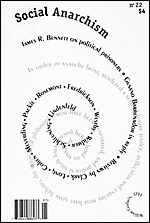Reclaiming Our Cities & Towns
In Munich, David Engwicht reports, chairs are left in the public square for anyone's usethey are not nailed down. Readers of this publication may remember that in Amsterdam, some years ago, a serious proposal was made for white bicyclesfree public bicycles available for temporary use by those who needed them. Such public amenities would stand little chance of even being considered in most U.S. cities for fear the chairs or bicycles would be stolen. Why this difference? The Europeans are more likely to have a sense of ownership and civic pride about their cities and towns, while many Americans and Australians do not even like their cities, much less exhibit any sense of ownership. Perhaps one answer can be found in the relative predominance of automobile traffic over public transit.
Cities and towns are eco-systems created by people for their mutual benefit. As Engwicht points out in this well-argued and nicely illustrated book, urban eco-systems facilitate exchange of culture, goods, friendship and knowledge. They provide opportunities for interaction and exchange within a limited space, minimizing the need for travel. Although some travel is needed within cities and towns to facilitate mutual exchange, the cancerous expansion of roads and automobile traffic is ruining our cities and destroying our neighborhoods.
Engwicht became a social activist when he learned of plans to widen an arterial road near his home in suburban Brisbane, Australia. After attending a public meeting to discuss the issue, he became an organizer for Citizens Against Route 20. That group focused on traffic calming, minimizing auto traffic in urban communities to enhance the quality of life, the main subject of this book.
The industrial revolution transformed cities into adjuncts of factory production; viewing cities as machines for production, however, dehumanizes their inhabitants. Writing in the tradition of Jane Jacobs and Lewis Mumford, Engwicht maintains that a different vision of the city is needed — one that embraces diversity, even chaos, and sees the city as an eco-system with its own internal life, creative energy and interdependence. Western cities, he says, have become monocultural with their income-graded suburbs and segregation of seniors in retirement communities. In the U.S., urban neighborhoods and suburbs are also often segregated by race. By reducing contact and interaction with those different from ourselves, such segregation impoverishes us all.
How did this happen? The post World War II suburban building boom was made possible by the expansion of roads and freeways as well as private automobile ownership. Seeking to flee the overcrowding, pollution, poverty and crime of the industrial city, many middle and upper middle class people who could afford it, moved out to detached, single family homes in suburban developments. Minorities and the poor were left in the inner cities. Their neighborhoods deteriorated as buildings were abandoned, stores closed and public services decreased.
The expansion of the suburbs was accompanied by the growth of commercial shopping malls, often miles distant from residential areas. Much unnecessary travel resulted from isolating workplaces and commercial areas from residential centers; reliance on the automobile further isolates us from each other. In the sprawling contemporary megalopolis like suburban Phoenix and Los Angeles, cars, roads and parking lots are ubiquitous, and pedestrians are rare; people are separated from each other, each within their own steel shell.
Engwicht contrasts three types of access to exchange opportunities: planned, home-based and spontaneous. Planned access is when we make a deliberate trip. Home-based exchange includes deliveries — such as a fruit and vegetable truck that travels down a residential street as people come from nearby homes to buy their produce and carry it home — as well as telephones and tele-computing. Spontaneous exchanges are those that happen as we wander through a city; by presenting diverse opportunities, cities maximize the possibility of spontaneous, unplanned exchanges and encounters. Nowadays, searching for the possibility of unexpected encounters, suburban teenagers drive out to seek excitement in the substitute "community" of the shopping mall.
What gives a city its vitality is the concentration of businesses, public places, culture and people. Travel can enhance urban exchange opportunities up to a point. Beyond that point, social returns diminish. Increasing automobile traffic gradually destroys the very heart and soul of the city. Urban areas, says Engwicht, have two types of space: exchange space (workplaces, homes, commercial areas, parks, community halls), and movement space (parking lots, freeways, train tracks, airports). Using more space for movement means there is less available for exchange: for example, small shops and houses are torn down to make room for a freeway. This also leads to the expansion of cities at their fringes, as farmland is turned into suburban residential areas. The very availability of freeways also encourages people to consider taking jobs at some distance from where they live, instead of searching harder for nearby work.
The higher the speed and density of the traffic on a given street, the more of that street is dominated by movement and the less available for exchange, such as childrens' play and socializing with the neighbors. Automobile travel has other deleterious effects, especially its contribution to urban sprawl. The more spread out a city, the less viable its public transport system. As auto traffic increases, people are less likely to walk or use bicycles because they don't feel as safe. The development of roads, shopping malls and superstores like Walmart also destroys local commerce. Small stores are among the first casualties of widened roads. Customers of the neighborhood stores are lured away by the shopping malls and superstores; fewer residents remain as homes are bulldozed to make room for wider roads. The death of the corner store is one important aspect of urban blight. As neighborhood shops close, local jobs are lost, and the possibilities for local interaction decrease. More crimes happen because there are fewer eyes on the street.
The mass production and use of automobiles in the 20th century has been an unmitigated social and ecological disaster. Continued mass car production and use of fossil based fuels is ecologically unsustainable. Auto traffic destroys cities and neighborhoods, while car accidents kill and maim hundreds of thousands of victims per year. Auto exhaust causes much of the smog hanging over many cities; burning fossil fuels in internal combustion engines contributes to the greenhouse effect.
Moreover, automobile-centered transportation systems discriminate against the poor, the elderly, and the young — all those who don't own a car or have access to one. Without adequate bicycle paths and public transit systems, the poor are deprived of access to jobs at the same time as they are forced to bear an unfair share of the social and environmental costs of the expansion of roads and auto travel.
What can ordinary citizens do to reclaim their towns and cities from the automobile? Engwicht provides some excellent suggestions:
- Build healthy neighborhoods. Make each neighborhood as self-sufficient as possible, providing living, shopping, recreation, work and cultural activities within compact areas to avoid forced travel. Each neighborhood should have a local commercial center and should produce many of its own necessities, including food for local consumption. This might mean more suburban truck gardens, more food grown (and solar energy captured) on rooftops, as well as limits to urban sprawl with clearly demarcated boundaries between the edge of the city and adjacent farming areas.
- Strengthen the city center. Locate in that center specialized facilities and services that cannot readily be provided within local neighborhoods.
- Optimize exchange efficiency. Bring resources to local neighborhoods. One grocery truck that makes home deliveries can take the place of scores of trips to the supermarket by local residents in their private cars. Without increasing the suburban population, increase its density by clustering residents closer together to make public transit more feasible, and intermingle housing, jobs and exchange opportunities in each neighborhood.
- Charge the true costs for access to exchange opportunities. Those who walk, cycle and use public transport subsidize the cost of roads for those who drive. Sharply increasing gasoline taxes, reflecting the scarcity of fossil fuels and their negative environmental impact, could help reduce auto travel.
- Promote "green friendly" modes of transport. Make walkways and bike paths safer and more pleasant. Construct covered bikeways and provide interconnections with transit stops.
- Convert planned exchanges into home-based or spontaneous exchanges. Make it less necessary to travel by car. By calming traffic, make residential streets more car-free and safe for children so they can walk more places instead of having to be driven; replace some city office jobs by telecommuting from home or neighborhood bases.
- Encourage the expression of diversitythrough space for creation, display and performance of community art and for public forums.
- Build neighborhood commons. Provide shared courtyards, common yards and recreation areas, and neighborhood stores. Provide a promenade loop (with amenities such as fountains and benches) connecting local schools, library, parks, stores and other destinations.
- Give local residents and neighborhoods greater control over decision making, including control over locally generated tax monies.
- Consider first the needs of those usually excluded — the poor, the young, the elderly and other marginalized groups — and maximize their participation in decision making. (For an inspiring example of how residents of the impoverished Dudley Street neighborhood in Boston began to transform their neighborhood, see Peter Medoff & Holly Sklar, Streets of Hope).
Engwicht's suggestions are sensible and practical. The adoption of even some of them would enable groups of citizen activists to build more viable neighborhoods, towns and cities.
My only criticism is that the book fails to take into account the effect of city size. When cities grow beyond a certain population, traffic and other urban problems begin to mount unbearably. Many large cities nowadays have routine traffic jams during morning and afternoon rush hours. There is no easy way to define at what size a city might be too big, and no simple solutions for reducing their size. Urban areas of 10 million inhabitants like New York or Los Angeles, however, seem excessively large. One test for maximum size might be whether at least half the food consumed in a city can be grown within an hour's transportation time from the center. Engwicht mentions Nuremberg and other European cities as positive examples of the benefits of traffic calming. What is it that makes cities like Nuremberg so charming? It is partly because they are medium size. Half a million inhabitants may be as large as a city should get. Beyond that, urban problems multiply geometrically, and it is more difficult to design workable transportation systems and to build livable neighborhoods.

